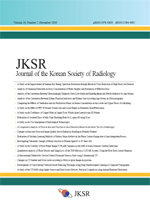FFF방식의 3D프린터 노즐 크기와 층 높이가방사선 차폐체 제작에 미치는 영향에 관한 연구
A Study on the Effect of FFF 3D Printer Nozzle Size and Layer Height on Radiation ShieldFabrication
- 한국방사선학회
- 한국방사선학회 논문지
- 제14권 제7호
-
2020.12891 - 898 (8 pages)
-
DOI : 10.7742/jksr.2020.14.7.891
- 48

최근 납으로 제작된 차폐체의 문제점이 대두되면서 대체 할 수 있는 차폐체 연구는 필수적이며 3D프린터로 진단용 X선 차폐체 제작에 관한 연구도 활발히 이루어지고 있다. 최근 금속 혼합 필라멘트의 개발로 쉽게 차폐제 제작이 가능해졌지만 3D 프린터의 노즐 크기나 출력설정에 관한 연구는 미비하다. 이에 본 연구는 Brass filament와 3D프린터로 노즐 크기와 층 높이에 따라 차폐체를 출력하고 진단용 방사선 발생장치를 이용하여 차폐율 실험을 통해 결과를 비교분석 하고자 한다. 노즐 크기는 0.4, 0.8 mm, 층 높이 0.1, 0.2, 0.3, 0.4 mm로 변화하여 출력하였고, 차폐율 시험은 40 mAs로 고정하고, 60, 80, 100 kVp로 각각 실험하여 차폐율을 분석하였다. 분석결과 노즐 크기와 층 높이에 따라 출력시간을 1/10로 줄일 수 있었으며, 1% 이상 차폐율도 높일 수 있는 것으로 분석되었다.
As the problem of shields made of lead has recently emerged, research on replacement shields is essential, and studies on the manufacture of diagnostic X-ray shields with 3D printers are also being actively conducted. Recently, with the development of metal mixed filaments, it has become possible to manufacture shielding materials easily, but studies on the nozzle size and output setting of 3D printers are insufficient. Therefore, this study aims to compare and analyze the results through a shielding rate experiment using a brass filament and a 3D printer, outputting the shield according to the nozzle size and layer height, and using a diagnostic radiation generator. The nozzle size was changed to 0.4, 0.8 mm, layer height 0.1, 0.2, 0.3, 0.4 mm, and output. The shielding rate test was fixed at 40 mAs, and the shielding rate was analyzed by experimenting with 60, 80, and 100 kVp, respectively. As a result of the analysis, it was analyzed that the printing time could be reduced to 1/10 according to the nozzle size and the layer height, and the shielding rate could be increased by 1% or more.
Ⅰ. INTRODUCTION
Ⅱ. MATERIAL AND METHODS
Ⅲ. RESULTS
Ⅳ. DISCUSSIONS
Ⅴ. CONCLUSIONS
Reference
(0)
(0)